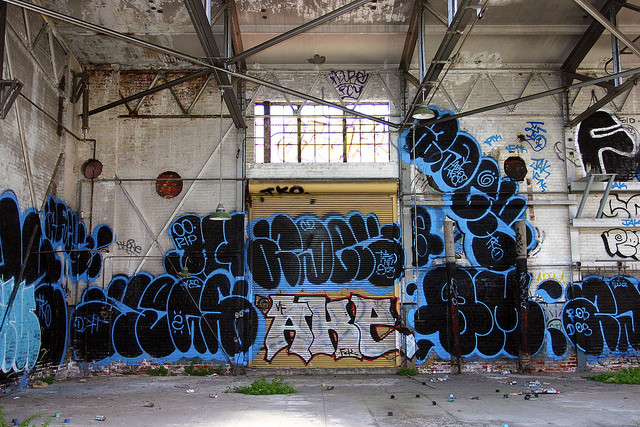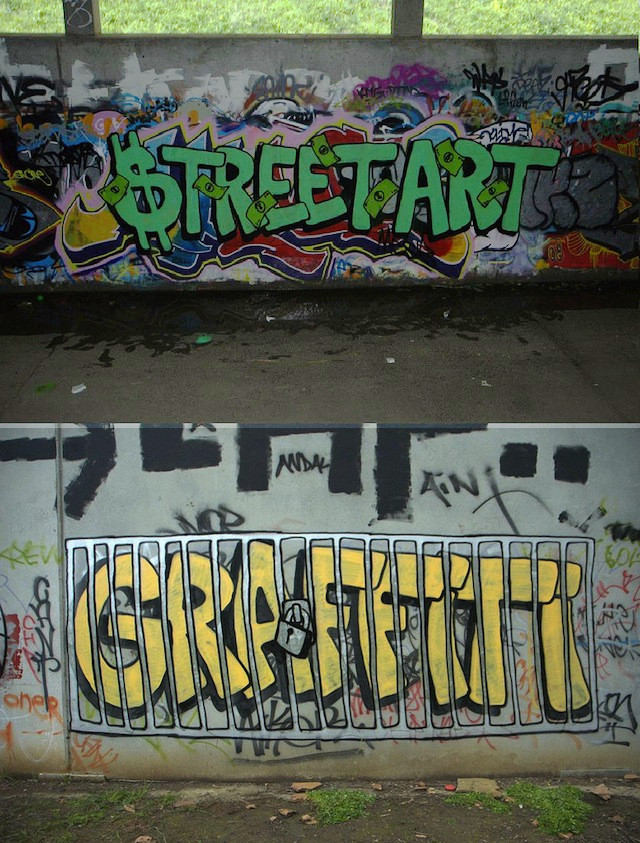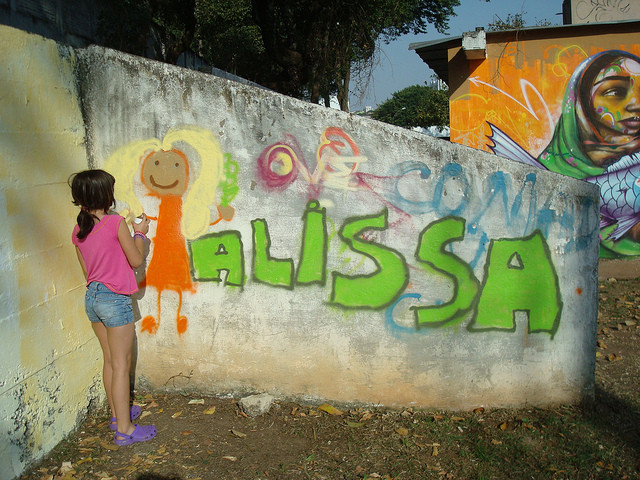Street art and graffiti often blur together, challenging viewers to distinguish between artistic expression and simple vandalism. The question of what constitutes “graffiti” versus “street art” becomes even more complex when focusing on lettering. Is it the presence of arrows, a crew name, or the risk of arrest that truly defines graffiti, particularly when examining the art of Street Art Graffiti Letters?
Originally, graffiti was intrinsically linked to lettering – stylized signatures and messages sprayed onto walls. However, street art has broadened the spectrum, incorporating murals, stencils, and various other forms of visual expression, sometimes moving away from traditional letter-based graffiti. Yet, lettering remains a vital component within both realms.
 MataOne street art mural in Renaix featuring bold graffiti letters. This urban art piece showcases dynamic letter forms typical of contemporary street art.
MataOne street art mural in Renaix featuring bold graffiti letters. This urban art piece showcases dynamic letter forms typical of contemporary street art.
Consider the example of “Wild Style,” a complex form of graffiti lettering that pushes legibility to its limits, prioritizing style and artistic innovation. Wild Style epitomizes graffiti as a visual language understood within its subculture, where the aesthetic complexity and the artist’s skill in manipulating letter forms are paramount. These intricate letter structures become abstract art for the uninitiated, yet deeply meaningful to those within the graffiti scene.
Street art graffiti letters can also take on satirical or conceptual dimensions. Artists sometimes use lettering to convey messages that critique society, comment on pop culture, or even satirize the very act of graffiti itself. This approach moves beyond mere tagging or stylistic expression, using letter-based art as a vehicle for broader communication.
 Conceptual graffiti by Adek and MQ in San Francisco, showcasing stylized lettering as a form of pop-contemporary egoism within urban art.
Conceptual graffiti by Adek and MQ in San Francisco, showcasing stylized lettering as a form of pop-contemporary egoism within urban art.
Furthermore, the scale and context of street art graffiti letters significantly impact their perception. A small tag hastily sprayed in an alley differs drastically from a large-scale mural incorporating elaborate lettering. Murals often represent commissioned or semi-commissioned works, blurring the lines with “street art” even further, while still heavily relying on the foundations of graffiti lettering styles.
 Large scale street art piece in Australia by Lush, employing slap-stick vandalism techniques in combination with bold lettering styles.
Large scale street art piece in Australia by Lush, employing slap-stick vandalism techniques in combination with bold lettering styles.
Even seemingly simple forms like “childstyle graffiti” or bubble letters demonstrate intentional artistic choices in letter form. These styles, while appearing less complex than Wild Style, still contribute to the diverse landscape of street art graffiti letters and represent distinct subcategories within the broader art form.
 Childstyle graffiti art in Brazil by Alissa, demonstrating a playful and less complex approach to street art lettering.
Childstyle graffiti art in Brazil by Alissa, demonstrating a playful and less complex approach to street art lettering.
Ultimately, deciphering street art graffiti letters requires understanding not just the individual letters but also the context, style, and intent behind them. Whether it’s a complex Wild Style piece, a satirical message, or a simple tag, the lettering in street art and graffiti carries layers of meaning and artistic expression that go far beyond simple writing on a wall. It’s a visual language constantly evolving and challenging our perceptions of art in public spaces.

